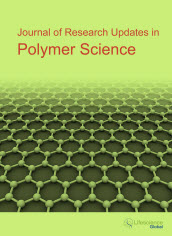jrups
|
|
Abstract: To meet the increasing demand for natural rubber (NR), currently sourced from the tropical rubber tree Hevea brasiliensis, and address price volatility and steadily increasing labor costs, alternate rubber-producing species are in commercial development. One of these, guayule (Parthenium argentatum), has emerged on the market as a commercial source of high quality rubber. Non-rubber constituents play an important role in the physical properties of NR products. The intrinsic composition of the two NR materials differs and these differences may be a principal cause of the performance differences between them. We have compared the effect of non-rubber constituents, such as protein, lipids, resin and rubber particle membranes. Firstly, a film casting method was developed to obtain rubber films with a uniform thickness. Secondly, the glass transition temperature of different rubbers was determined by dynamic mechanical analysis, and tensile properties were tested for uncompounded materials. Guayule natural rubber (GNR), from which most of the membranes were removed while in latex form (MRGNR) was found to have higher intrinsic strength than GNR or gel-free NR (FNR). An acetone extraction was performed to quantify the resin and free lipids in the rubber samples. Keywords: Guayule, Hevea, natural rubber, protein, resin.Download Full Article |
|
|
Abstract: Over the past decades, composite materials have been increasingly utilized in various industries because of their superior mechanical properties and resistance to corrosion. Drilling is essential to produce precise holes when load-carrying structures are produced using composites. Because of the non-homogeneous andanisotropic property of composite laminates, delamination often occurs at the point where the drill exits, which affects reliability and safety. Some studies present a suppressed mechanism to prevent delamination when drilling composite laminates. The experimental results demonstrate delamination is significantly reduced by various suppressed mechanisms and greater feed rates produce the same level of delamination. The use of special drill geometries and backup has been demonstrated to be more advantageous than the use of adapted feed controls. The basis for the future development of a suppression mechanism for drilling composite laminates is determined. Keywords: Composite materials, Drilling, Delamination, Suppressed mechanism, Backup.Download Full Article |
|
|
Abstract: Blend films from nature soy protein isolates (SPI) and synthetical poly (vinyl alcohol) (PVA) were successfully fabricated by crosslinkage of ferulic acid (FA) based on a solution-casting method. Structure analysis results indicated that FA had chemical reactions with both SPI and PVA, a three-dimensional interpenetrated polymer networks (IPN) had formed between SPI and PVA. The miscibility of SPI/PVA blends had improved by crosslinkage of FA. Moreover, the transparency of films had enhanced with the increasing of FA contents, which proved the INP structure of SPI/PVA blends could be adjusted by cross-linking degree. This method supplies a highlight potential usage of SPI as environmental-friendly packaging films. Keywords: Biomaterials, polymers, soy protein isolate, poly (vinyl alcohol), ferulic acid, interpenetrating polymer network.Download Full Article |
|
|
Abstract: A significant amount of research has been focused on the use of ceramic nano/micro particles to enhance the strength and stiffness of polymeric matrices. This work evaluates the effect of Portland cement or crystalline silica (quartz) particle inclusions into epoxy polymer. Two experiments were conducted based on a full factorial design analysis. Experiment I investigated the effect of Portland cement amount (ASTM III), two types of hardeners (HY 951 and 956) and two curing times (7 and 28 days) on the compressive behaviour and density of particulate composites. Experiment II evaluated the incorporation of quartz or cement particles by mixing different mass fraction levels, considering 28 days of curing time and HY 951 hardener. The samples were prepared in a randomized manufacturing process and tested in compression. The mechanical properties were significantly affected by the type of hardener used. Both particles, considered in appropriate level set, can enhance the compressive strength and stiffness of the composites. Keywords: Ceramic particles, epoxy polymer, particulate composites, mechanical properties.Download Full Article |
|
|
Abstract: Polymer recycling has been the most suitable alternative for management of plastics waste that are responsible by serious environmental damages. However, the recycling of some polymer materials, such as vulcanized elastomers, is not a trivial process. The recycling of elastomers is a process more complex than the recycling of thermoplastic polymers because the elastomers cannot be remolded by simple heating after vulcanization. Methods for rubber devulcanization has been developed as an interesting alternative for recover flow properties of elastomers, allowing other molding cycle. The aim of this work was to evaluate the effect of the presence of carbon black on devulcanization of styrene-butadiene rubber (SBR) by microwaves and analyze properties of recycled material. The devulcanization by microwaves showed efficiency for rubber compositions with higher content of carbon black incorporated as well as the properties of recycled material showed satisfactory performance for reuse in other products. Microwaves devulcanization of SBR is an important alternative for reuse of rubber waste and decrease of the environmental problem generated with discard of these materials. Keywords: Devulcanization, microwaves, rubber recycling.Download Full Article |


